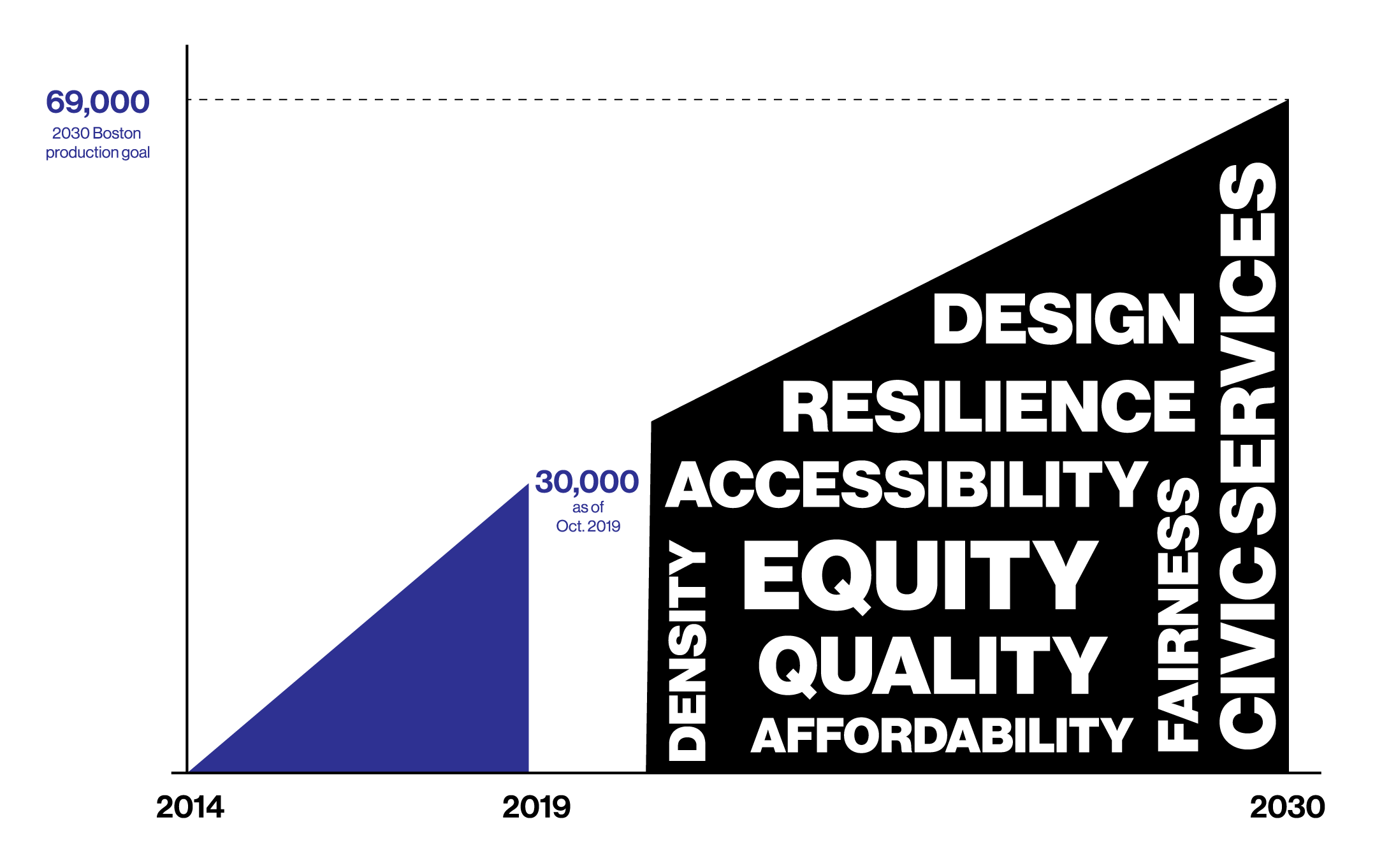Among the litany of issues facing the country, the COVID-19 pandemic reminds us that adequate provision of housing is more important than ever. For those lucky enough to be able to work from home, the functional demands on domestic environments have exploded: Living rooms and bedrooms have been converted into offices, gyms, classrooms, home theaters, and workshops. If a family member or roommate is sick, makeshift isolation units are devised. Low-income, low-job-security workers fear for their long-term ability to pay for housing. This is especially true in expensive cities such as Boston, New York, and San Francisco, where federal stimulus dollars may not even cover a single month’s rent. Every week, millions more workers lose their jobs, and many increasingly fear eventual eviction. Provision of adequate housing for all—defined by the United Nations as a human right—is becoming simultaneously more important and more uncertain every day.
This, combined with decades-long structural inequality in housing and the more recently recognized national affordability crisis, has led some politicians to begin discussing housing with renewed intensity. Senator Elizabeth Warren, for example, has publicly advocated for affordable housing to be a key element of the pandemic recovery. In a recent interview with Ezra Klein published on Vox, she explained the benefits of accelerating production: Expanding availability will have short-term benefits by providing jobs and long-term benefits by creating a “more stable housing supply that takes a lot of economic pressure off families.”
While society remains in a holding pattern filled with uncertainty, it is likely that housing planning and policy will see some degree of reorientation in the coming months and years. For cities, it will be critical to reexamine a dominant metric of housing that emerged after the last recession: production supply targets.
Before the pandemic
Since the 2008 recession, planning departments in major US metropolitan areas have developed comprehensive plans aimed at a wide range of topics. Frameworks for the development of the city, these blueprints outline broad objectives and challenges without getting into the specifics of implementation. Not surprisingly, housing was identified as a major topic for cities such as New York and Boston, whose comprehensive plan, Boston 2030, called for the production of 69,000 housing units by the year 2030. (New York’s OneNYC called for 300,000 by 2026.)
Both cities have made progress toward these goals. Last fall, Boston announced it had produced 30,000 units while New York City produced about 122,000 by November—significant achievements. Economists and policymakers generally agree that insufficient supply is a major culprit in the affordability crisis, and the web is overflowing with articles touting the benefits of supply-side solutions to the housing crisis. A January 2020 article in The Economist concluded that “only a long-lasting construction boom has any chance of noticeably improving housing affordability.” Is it really this simple?
For expensive cities, supply-side solutions may work better in theory than in practice. Chris Herbert, managing director of the Joint Center for Housing Studies at Harvard University, explains that at the municipal level, establishing production targets is an attempt to instigate a process known as “filtering”—if cities build enough housing at the upper, more expensive end of the spectrum, those units will absorb people who move out of other units. This process continues, and, in theory, housing at the more affordable end of the spectrum becomes available.




